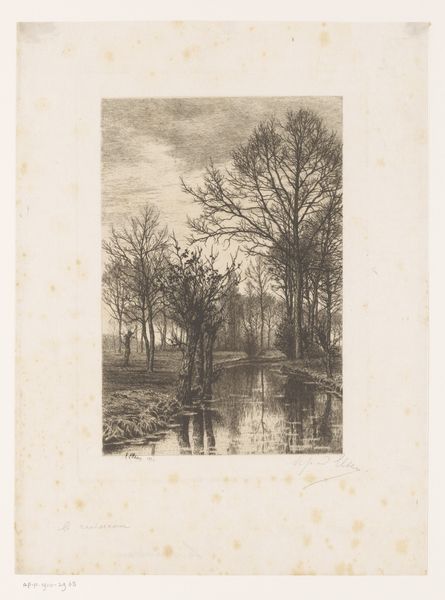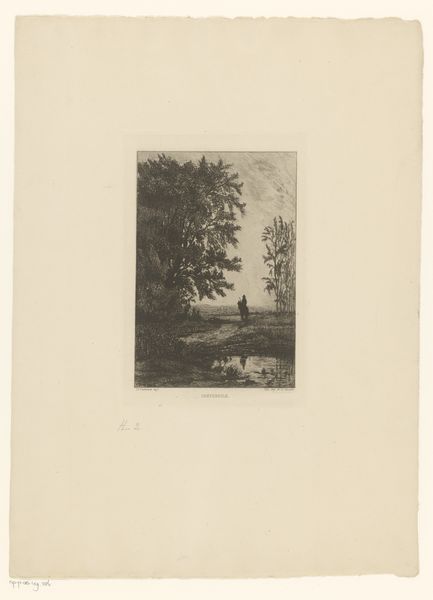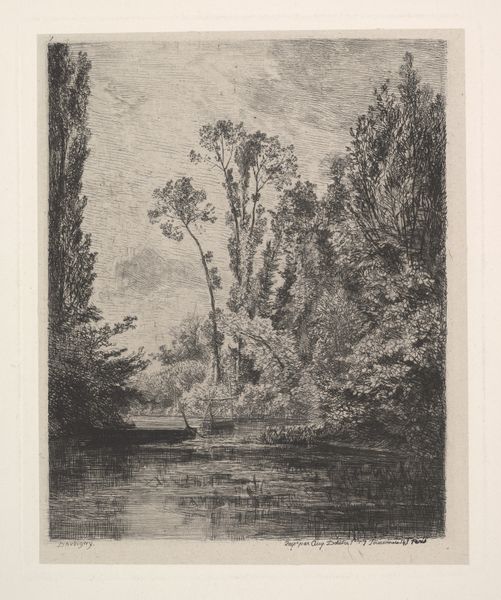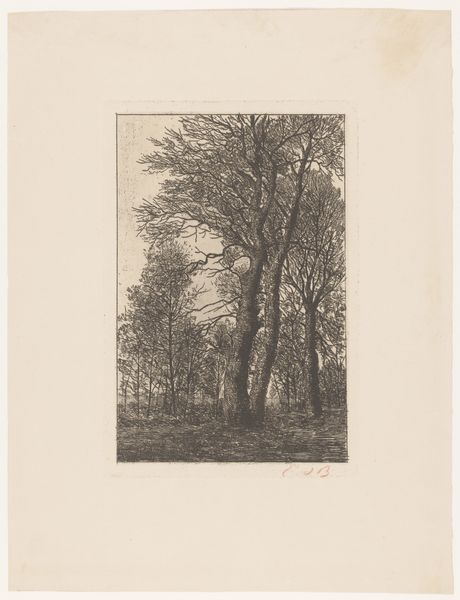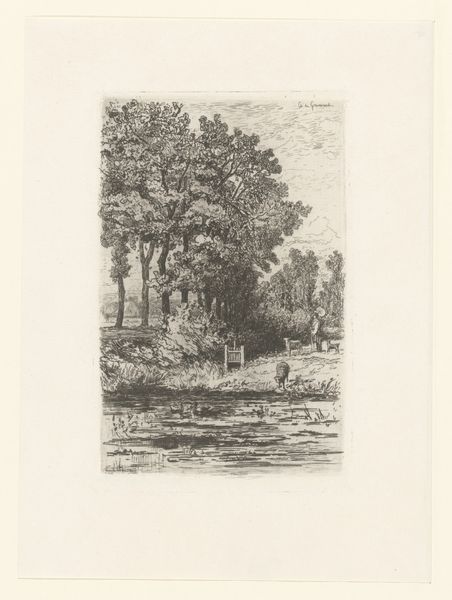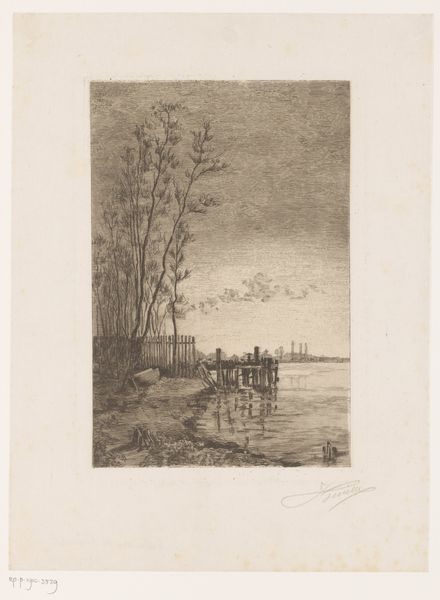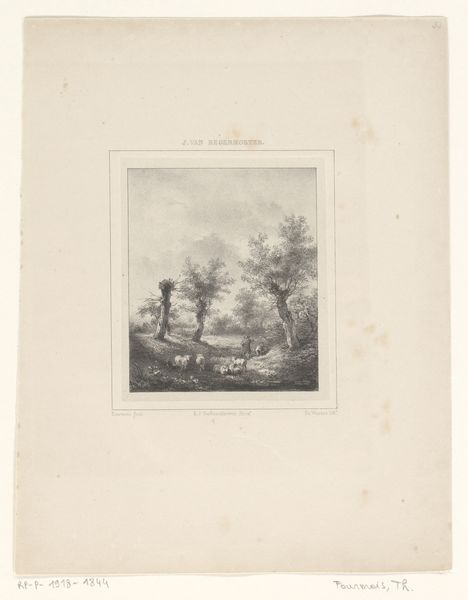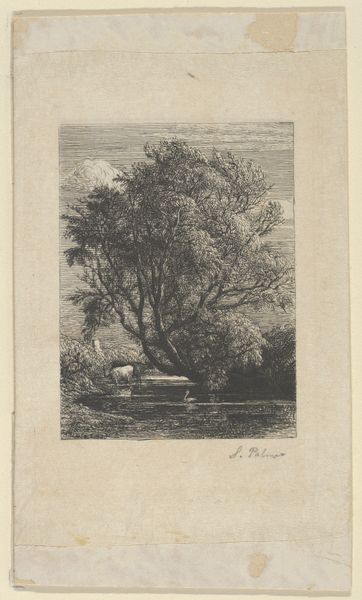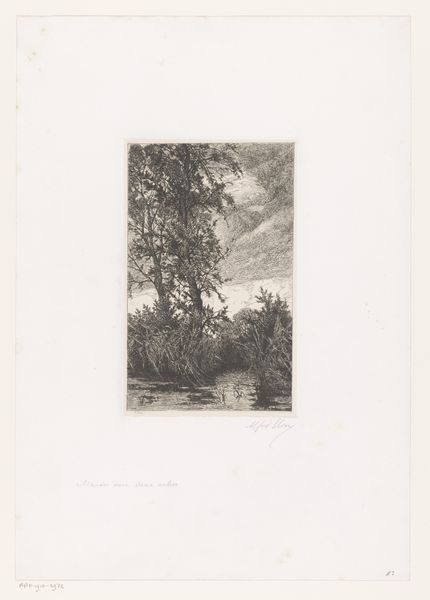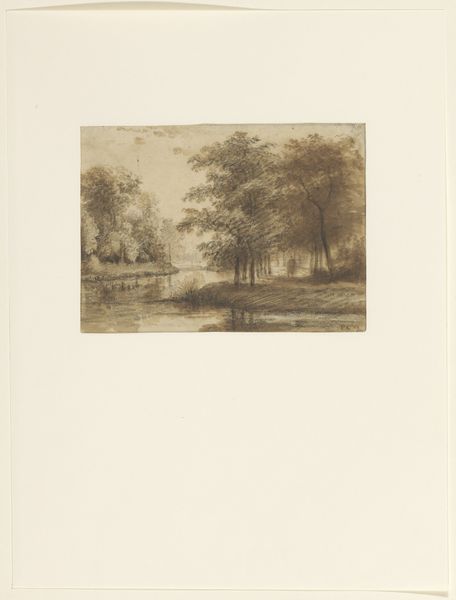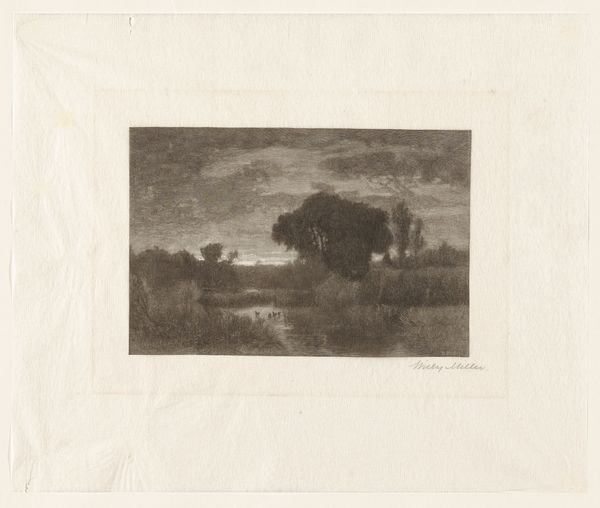
print, etching
#
night
# print
#
etching
#
old engraving style
#
landscape
#
realism
Dimensions: height 249 mm, width 160 mm
Copyright: Rijks Museum: Open Domain
Curator: I’m struck by the way this etching, “Nachtelijk herfstlandschap met een boerderij aan een vaart” - Nightly autumn landscape with a farm on a canal - by Jules Guiette captures the stillness of night. What's your impression? Editor: Well, immediately the limited tonal range projects a profound somber mood. You feel that thick, cold air, especially given how the light barely illuminates the scene. It's not quite desolation, but certainly evokes isolation. Curator: Yes, and considering Guiette worked primarily as a glass designer, it’s fascinating to see him using the etching process here. This detailed print medium offers such an intimate and reproductive way to examine labor, challenging traditional hierarchies of artistic expression. Editor: Absolutely. Think about this scene through the lens of agrarian life. Consider the socio-economic implications: How reliant were communities on the waterway? Who worked the farmland around this solitary homestead, and under what conditions? Even the position of the moon, offering a bare sliver of light, signifies precarious conditions and long nights of work. Curator: I agree. And it is important to look at printmaking as a process available to the broader public in the later 19th Century. What would this image offer its owner? Escapism? Education? Editor: Possibly. Remember that romanticizing rural labor in art often veiled its realities. We have to consider issues of power and representation too. Who controls the means of creating and disseminating such images, and whose stories remain untold as a result? What labor are they consuming? Curator: Certainly a necessary question to always ask. Perhaps, as you noted earlier, the gloominess may come as a consequence of Guiette being more familiar with colour application in glass making, than tone creation in etching? The textures still fascinate. Editor: They do, and despite the artistic limitations in this etching medium, his textural landscape can still prompt us to meditate on those complexities—of nature, of society, and of art itself. Curator: I appreciate you pointing out that these somber representations offer the occasion to engage more thoughtfully with the past, even from our listening point here in the present.
Comments
No comments
Be the first to comment and join the conversation on the ultimate creative platform.
